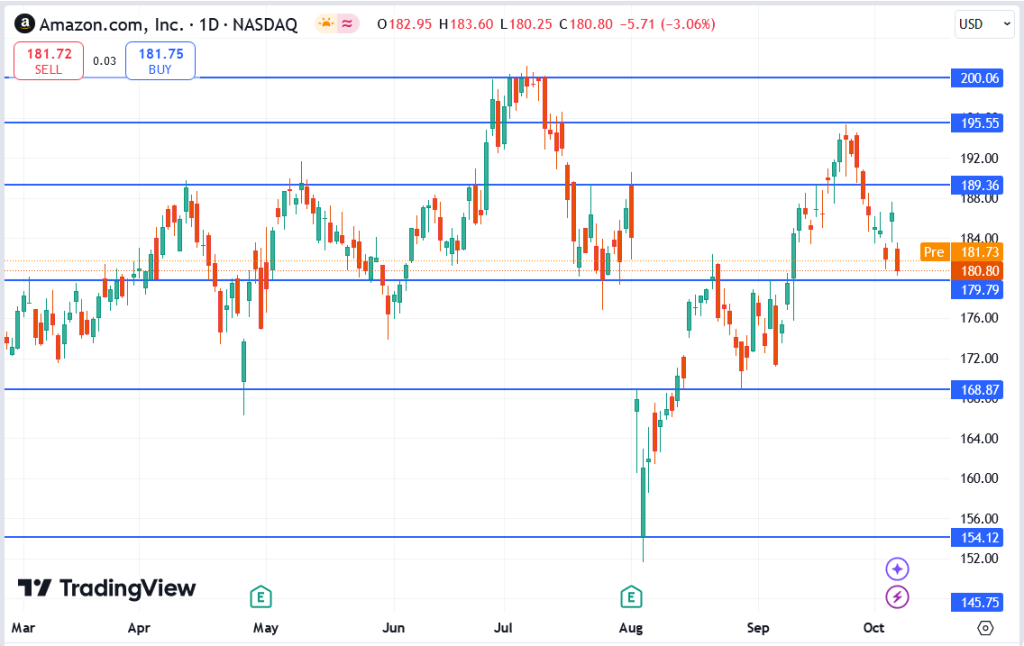- Summary:
- The question on everyone’s mind is: Could Amazon (NASDAQ: AMZN) continue to slide, or is there a bounce on the horizon?
Amazon’s share price has taken a notable hit recently, with a 3% dip pushing it down to around $180.80. Investors are watching closely as the stock approaches key technical levels. The question on everyone’s mind is: Could Amazon (NASDAQ: AMZN) continue to slide, or is there a bounce on the horizon?
Amazon Key Support and Resistance Levels
Amazon is currently testing the support around $179.79. This level has previously acted as a springboard for rebounds, so it’s a critical juncture for the stock. Should Amazon break below this support, the next stop could be $168.87, a level not seen since mid-August.
On the upside, resistance appears strong around the $189.36 mark. The recent attempts to clear this level have failed, indicating that sellers are firmly in control. To regain upward momentum, Amazon would need a solid break above this resistance.

Technical Indicators Suggest Potential for Further Volatility
Several technical indicators hint at the potential for increased volatility in Amazon’s stock price. The MACD recently slid into bearish territory, meaning downward momentum may continue. The RSI is trending downward, meaning that Amazon could be oversold if the decline continues.
Broader Market Factors Impacting Amazon
Amazon’s price movement isn’t just about technical factors; broader economic shifts also influence it. Interest rates, inflation concerns, and earnings reports from tech players shape investor sentiment surrounding Amazon. Amazon also faces competition in e-commerce and pressure from its cloud computing competitors, like Microsoft and Google.


